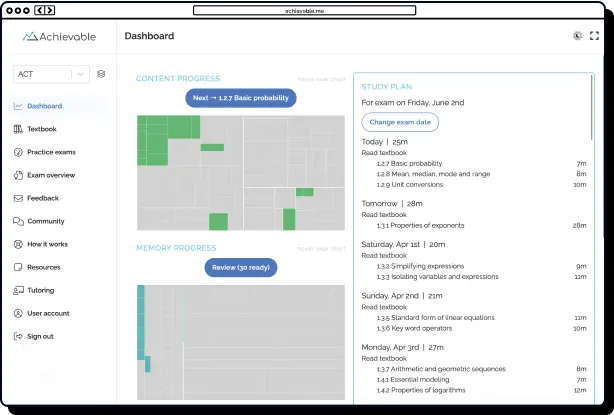
NPTE content outline: Body systems and more




Table of contents
- NPTE content overview
- NPTE-PT content outline
- NPTE-PTA content outline
- Overview of body system NPTE content areas
- Cardiovascular and pulmonary systems
- Musculoskeletal system
- Neuromuscular and nervous systems
- Integumentary system
- Metabolic and endocrine systems
- Gastrointestinal system
- Genitourinary system
- Lymphatic system
- System interactions
- Overview of NPTE nonsystem content areas
- Equipment, devices, and technologies
- Therapeutic modalities
- Safety and protection
- Professional responsibilities
- Research and evidence-based practice
- How to study for the NPTE
- Where can I take the NPTE?
- Key takeaways
Passing the National Physical Therapy Examination (NPTE) is a crucial milestone for anyone pursuing a career as a physical therapy professional in the U.S. The NPTE exam serves as the official board certification required for both physical therapists (PTs) and physical therapist assistants (PTAs). The NPTE-PT and NPTE-PTA exams ensure candidates meet the necessary standards for entry-level competence following graduation from an accredited physical therapy program.

NPTE content overview
The PT exam and PTA exam are structured to assess comprehensive knowledge based on the NPTE content outline. Exam questions are grouped into two major categories: body system and non-system. The body system section evaluates understanding of key biological and anatomical systems, including cardiovascular and musculoskeletal, endocrine, and others. The non-system section focuses on applied clinical knowledge, such as the use of therapeutic equipment, therapeutic modalities, and essential regulations relevant to the NPTE exam.
While the content outline for both the PT exam and PTA exam is similar, the scope and depth of knowledge required vary. The NPTE for PTs is more extensive, reflecting advanced material covered in Doctor of Physical Therapy (DPT) programs. The NPTE-PTA emphasizes core concepts from PTA associate degree and pre-professional curricula. Both the PT and PTA exams go beyond simple recall of medical facts: they challenge candidates to apply their knowledge and clinical reasoning in real-world scenarios.
Understanding the structure and expectations of the NPTE is essential for effective preparation. Reviewing the NPTE content outline and familiarizing yourself with the types of questions found on either the PT and PTA exams are key steps when planning how to study. Both exams are designed to ensure that future physical therapists and assistants possess foundational knowledge and the ability to translate learning into competent patient care.
NPTE-PT content outline
The NPTE exam for physical therapists (PTs) is a rigorous 5-hour test consisting of 225 questions that emphasize core biology, kinesiology, and essential medical knowledge relevant to the profession. The NPTE-PT content outline focuses heavily on body systems, dividing this section into three critical areas:
- Examination
- Foundations for patient evaluation, differential diagnosis, and prognosis
- Interventions
Mastery of these topic areas through comprehensive NPTE is crucial for test takers aiming to receive a passing score, or 70 and above. Below you’ll find the breakdown of expected question counts across various bodily systems in the NPTE-PT exam:
Body system | Examination | Foundations for evaluation, differential diagnosis, & prognosis | Interventions |
|---|---|---|---|
Cardiovascular and pulmonary systems | 7 - 8 | 7 - 9 | 8 - 10 |
Neuromuscular and nervous systems | 13 - 16 | 13 - 16 | 13 - 16 |
Integumentary system | 2 - 3 | 3 - 4 | 3 - 4 |
Metabolic and endocrine systems | - | 2 - 3 | 2 - 3 |
Gastrointestinal system | 1 - 2 | 1 - 2 | 1 - 2 |
Genitourinary system | 0 - 1 | 1 - 2 | 1 - 2 |
Genitourinary system | 0 - 1 | 1 - 2 | 1 - 2 |
Lymphatic system | 1 - 2 | 1 - 2 | 2 - 3 |
System interactions | - | 8 - 10 | - |
Total Across Systems | 38 - 50 | 51 - 66 | 45 - 58 |
Included in the exam are a series of non-systematic questions that tackle other areas of physical therapy practice, from technology to safety regulations to professional responsibilities:
Equipment, devices, and technologies | 5 - 6 |
|---|---|
Therapeutic modalities | 4 - 6 |
Safety and protection | 5 - 7 |
Professional responsibilities | 4 - 5 |
Research and evidence-based practice | 3 - 5 |
NPTE-PTA content outline
In contrast to the NPTE-PT, the PTA exam (also known as the NPTE-PTA) consists of 180 questions and is designed to be completed over 4 hours. This exam is structured to reflect real-world clinical scenarios and includes a range of NPTE questions focused on the following sections:
- Data collection
- Diseases and conditions that impact effective treatment
- Interventions
The distribution of NPTE questions within each body system section is outlined below:
Body system | Data collection | Diseases/conditions that impact effective treatment | Interventions |
|---|---|---|---|
Cardiovascular and pulmonary systems | 5 - 8 | 7 - 9 | 8 - 10 |
Musculoskeletal system | 9 - 12 | 10 - 13 | 12 - 15 |
Neuromuscular and nervous systems | 8 - 10 | 9 - 12 | 10 - 13 |
Integumentary system | 1 - 2 | 1 - 3 | 1 - 3 |
Metabolic and endocrine systems | - | 2 - 3 | 2 - 3 |
Gastrointestinal system | - | 0 - 2 | 0 - 2 |
Genitourinary system | - | 0 - 2 | 0 - 2 |
Lymphatic system | 0 - 2 | 1 - 2 | 1 - 2 |
System interactions | - | 5 - 7 | - |
Total across systems | 23 - 34 | 35 - 53 | 34 - 50 |
Similar to the NPTE-PT, the PTA exam features nonsystem questions that are not divided into additional subcategories. The PTA exam places a slightly greater emphasis on equipment, therapeutic modalities, and safety procedure questions. These evaluations help ensure that candidates are well-versed in areas critical to safe and effective practice:
Nonsystem | Total per nonsystem |
|---|---|
Equipment, devices, and technologies | 8 - 10 |
Therapeutic modalities | 5 - 7 |
Safety and protection | 6 - 8 |
Professional responsibilities | 2 - 4 |
Research and evidence-based practice | 1 - 3 |
Overview of body system NPTE content areas
Below is a brief overview of body systems covered on the NPTE. Please note that anatomical systems are deeply complex, and each paragraph and diagram below is meant to serve as a concise introduction to the topic.

Cardiovascular and pulmonary systems
The cardiovascular and pulmonary systems encompass the heart, lungs, and circulatory system. Every breath we take supplies the body with oxygen, and every beat of our hearts transports oxygen- and nutrient-rich blood through our blood vessels. The lungs supply the body with oxygen and clear our systems of toxic carbon dioxide. Think of the heart as the engine that pumps the blood, your lungs as the fuel source and filter, and your veins and arteries as the wires that connect everything together.

Musculoskeletal system
The musculoskeletal system is one of the most important systems to master as a physical therapist. As the name suggests, this interconnected system contains our bones, skeletal structure, and muscles. Knowing how all components interact with each other is the key to understanding how our body moves and maintains stability.

Neuromuscular and nervous systems
The neuromuscular system refers to a neural circuit that includes motor neurons, sensory neurons, and skeletal muscle fibers. Nerves provide sensation to the body, allowing us to experience touch and warning us of potential danger through pain.
The nervous system is made up of two parts: the central nervous system (CNS) and the peripheral nervous system (PNS). The CNS refers to the nerves in the brain and the spinal cord, while the PNS encapsulates the rest of the nerves in your body. Nervous system mechanics is crucial knowledge for physical therapists: treatment can be demanding for patients, so it’s imperative that PTs and PTAs develop treatments that do not cause extra stress or pain.

Integumentary system
The skin is the largest organ in the body and can weigh over 20 pounds, depending on height and body mass. Its main functions are to protect the body, control temperature, prevent dehydration, and store water, fat, and metabolic products. The skin also produces oil, sweat, and hormones that help protect and regulate the body. Included in the integumentary system are also hair, nails, and certain glands within the skin. Memorizing skin layers and how the integumentary system interacts with other parts of the body is crucial knowledge for the NPTE exam.

Metabolic and endocrine systems
The endocrine system secretes hormones, the body’s “chemical messengers,” directly into the circulatory system to regulate target organ function. The feedback loop works to control the release of these hormones and maintain homeostasis, or the state of steady conditions vital for life. Hormone imbalances can cause issues such as weight gain and worsen mental health conditions, and can be indicators of serious medical problems.

Gastrointestinal system
The digestive system consists of the gastrointestinal (GI) tract, the liver, pancreas, and gallbladder. The GI tract is a series of organs joined in a long, twisting tube throughout the body. Along the GI tract are hollow organs, which include the mouth, esophagus, stomach, and intestines, as well as solid organs such as the liver, pancreas, and gallbladder.

Genitourinary system
This important system within the body consists of urinary and reproductive organs. It serves two primary purposes: waste expulsion and reproduction. Genitourinary organs include the kidneys, ureter, bladder, urethra, and external sex organs. Hydration, a healthy diet, and exercise play a huge role in maintaining genitourinary system health.

Lymphatic system
Your lymphatic system is a group of organs, vessels, and tissues that protect you from infection and maintain a healthy balance of fluids throughout your body. Lymphatic system organs include your bone marrow, thymus, and lymph nodes. Swollen lymph nodes are a sign of common infections, like strep throat, but also more serious diseases, like cancer.
System interactions
These systems do not work in isolation; they work together to keep the body healthy and active. Each system serves as a feedback loop to another, and understanding system interactions is important for any medical professional.
In physical therapy, recovery plans often include both targeted and holistic approaches, ensuring that specific injuries are addressed while the patient’s overall health and well-being are maintained. This is why it’s vital to know how different actions, movements, and treatments affect specific areas and the body as a whole. A warning sign in one system, such as a fast heartbeat, could indicate a serious condition affecting another part of the body.
Overview of NPTE nonsystem content areas
The practical and regulatory content of the NPTE is as follows:
Equipment, devices, and technologies
This category refers to the use requirements and best practices of different types of equipment, devices, and technologies. Students must demonstrate that they can make decisions about treatment tools quickly and safely. Information covered in this section supports appropriate and effective patient/client management for rehabilitation, health promotion, and performance.
Therapeutic modalities
This category assesses knowledge on the underlying principles of varying therapeutic modalities and the justification for the selection and use of different types of treatment. PTs and PTAs must consider the best available evidence when implementing and adjusting treatments for patients.
Safety and protection
Questions in this section cover critical issues involved in patient/client safety and protection. One of healthcare providers' main responsibilities is to ensure that patient/client management and healthcare decisions take place in a secure environment. PTs and PTAs must be prepared to carry out treatment safely and spot any warning signs of unsafe practice.
Professional responsibilities
This category covers healthcare providers' responsibilities in ensuring that patient/client management and healthcare decisions take place in a trustworthy environment. This section may include questions on standards of documentation, Health Insurance Portability and Accountability Act (HIPAA) rights, human resource legal issues, cultural and socioeconomic factors of patients, and more.
Research and evidence-based practice
This section tests candidates’ ability to use measurement principles and research methods in reasoned assessments and evaluations. Test takers are assessed on their ability to source, analyze, and interpret information to inform patient/client management decisions, a fundamental part of evidence-based practice.
How to study for the NPTE
Studying for the NPTE begins with a thorough understanding of the core content areas listed above. Effective NPTE prep means taking the knowledge gained from your coursework and transforming it into useful study tools. These study materials can be flashcards, comprehensive NPTE study guides, and other resources tailored to help you retain essential information.
To strengthen your NPTE preparation, take advantage of official resources provided by the Federation of State Boards of Physical Therapy (FSBPT), the organization responsible for administering the NPTE:
- Official FSBPT practice exams (PEAT)
- NPTE Candidate Handbook
- NPTE in Sixty Seconds - FSBPT video overview
- Six-point “helpful hints” checklist for preparing for the NPTE
Along with official NPTE prep materials, consider using reputable third-party test preparation programs that align with your learning style. Choose NPTE preparation services that provide abundant practice questions and full-length exams modeled after the actual NPTE.
While both exams are challenging, focused study and effective use of the NPTE content outline can significantly improve your chances of achieving a passing score. In 2024, the first-time pass rates were 82% for PTs and 76% for PTAs. Regular practice with questions similar to those on the real exam helps you become familiar with the test’s structure, content, and language, which is vital for successful NPTE prep.

Where can I take the NPTE?
The NPTE-PT and PTA are available year-round at Prometric Testing sites across the country. When you schedule the exam, you will need to provide the following information:
- Name of the examination (Physical Therapist NPTE, Physical Therapist Assistant NPTE)
- Where and when you would like to test (location of Prometric Center and approved test date)
- Your name
- Social Security Number or Alternate Identification Number
- Phone number
- Type of payment: credit card or direct debit
The exam fee is $100.30 for the NPTE-PT and $82.60 for the NPTE-PTA. It’s advisable to schedule the exam as far in advance as possible, as some testing sites and locations can fill up quickly. Registering a few months prior to your test date also allows you to set enough time to study and be fully prepared to pass the exam on your first try.
Key takeaways
The NPTE exam, formally known as the National Physical Therapy Examination, is a crucial evaluation tool that determines how well aspiring physical therapists (PTs) and physical therapist assistants (PTAs) are prepared to excel in their professional roles. More than just a test of retention, the NPTE requires examinees to apply scientific concepts and clinical knowledge in real-world healthcare scenarios. This exam establishes necessary standards for physical therapy providers and gives regulatory authorities a way to assess each candidate’s readiness for practice.
By successfully passing the NPTE or PTA exam, recognized in all U.S. states, PTs and PTAs are then eligible to take their state-specific jurisprudence exam as the final step toward full licensure. Effectively preparing for the NPTE by completing rounds of practice questions and exams empowers candidates to master the content covered on the official test. With focused preparation and a thorough grasp of the exam structure, aspiring PTs and PTAs can pass the NPTE and move one step closer to beginning their practice in physical therapy.

